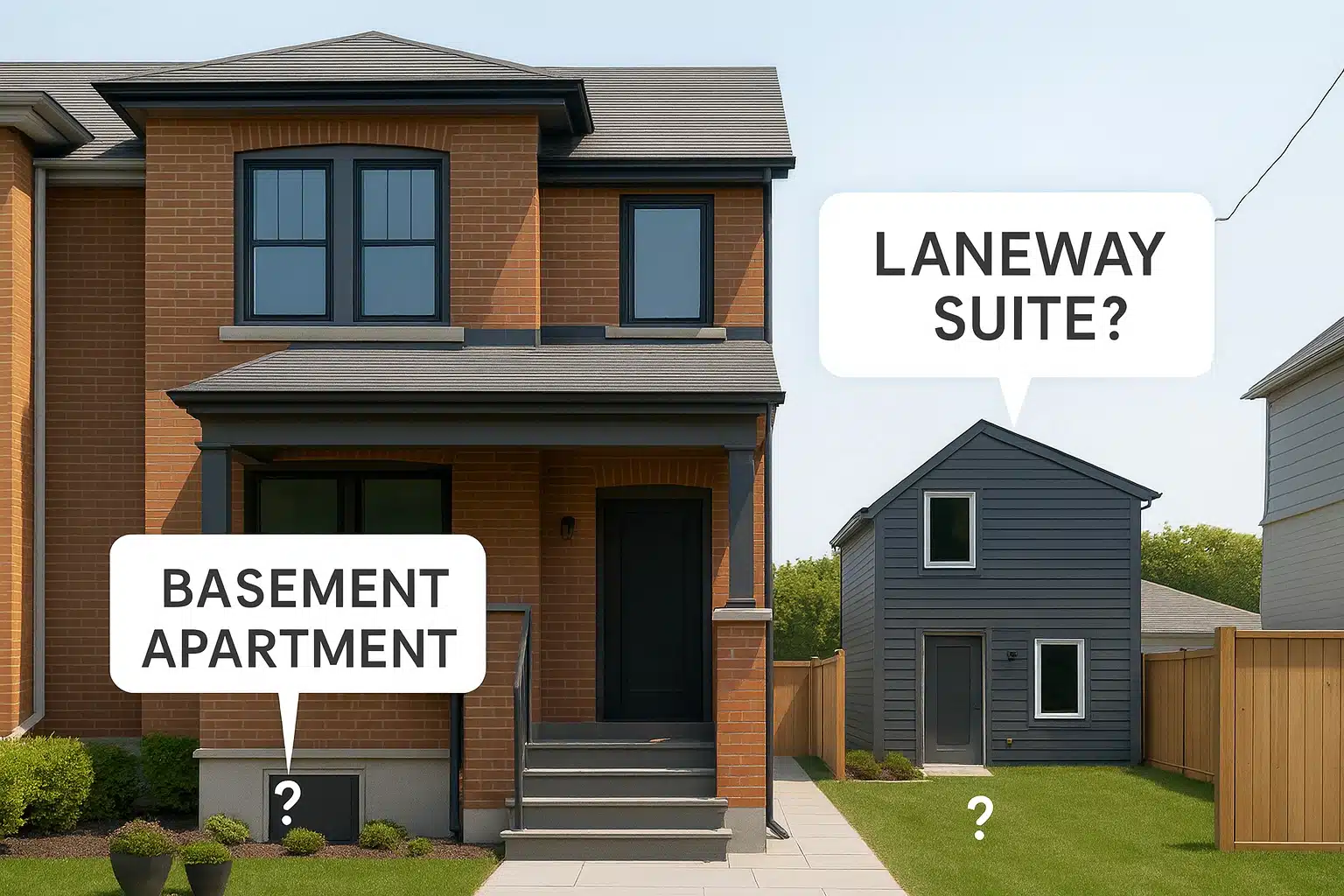Families in Toronto are increasingly looking for ways to live together comfortably across generations. Rising housing costs, aging parents, and accessibility needs all make multigenerational living an appealing solution. The Multigenerational Home Renovation Tax Credit (MHRTC) offers up to $7,500 back when you create a qualifying secondary unit for an elderly relative or an adult with a disability.
At Woodsmith Construction, we help families in Toronto’s east end plan these renovations so they meet both family needs and tax credit requirements.
What the MHRTC Is
The MHRTC is a federal refundable tax credit introduced in 2023.
Homeowners can claim 15% of up to $50,000 in qualifying renovation expenses to create a self-contained secondary unit for a qualifying individual. That’s a maximum of $7,500 back in your pocket.
✅ Qualifying individual = 65+ or 18+ and eligible for the Disability Tax Credit.
✅ Qualifying relation = parent, grandparent, child, grandchild, sibling, aunt/uncle, niece/nephew.
✅ Renovation must result in a self-contained unit with its own kitchen, bathroom, sleeping area, and entrance.
What Renovations Are Covered?
The renovation must create or adapt a secondary unit that meets local building codes:
Basement apartments
Garden suites
Additions creating separate apartments
Garage conversions
❌ Not covered: simple remodels without full kitchen/bath/entrance, or cosmetic changes like flooring.
How Much You Can Claim
Claim up to $50,000 in expenses per qualifying renovation.
Refund = 15%, so up to $7,500 credit.
Can only be claimed once per qualifying individual in their lifetime.
Toronto/East-Toronto Specific Rules You Need to Know
Toronto bylaws are unique, and East Toronto (Leslieville, Riverdale, The Beaches, East York) has extra wrinkles because of heritage overlays, narrow lots, mature trees, and parking rules.
Here’s how it plays out locally:
1. Secondary Suites (By-law 549-2019)
Allowed in all detached, semi, and townhouse homes city-wide.
Removed the “house must be 5 years old” rule.
Removed unit-size minimums.
Reduced parking requirements in many districts.
📌 Impact in East Toronto: Basement apartments or additions can usually be legalized, but older homes often need upgrades (fire separation, ceiling height, plumbing, electrical).
2. Garden Suites
If you don’t have a rear lane, you may build a Garden Suite:
Setbacks: rear yard min. 1.5 m; side yard = greater of 0.6 m or 10% of lot frontage.
Separation: if taller than 4 m, must be at least 7.5 m from main house.
Height: max 4 m (close) or up to 6 m (with proper separation).
Lot coverage: capped at 40% of rear yard or ~60 m².
Soft landscaping & tree protection apply — common issue in Beaches & Leslieville.
💡 Did you know? A single mature tree can stop or reshape a garden suite project. East Toronto’s tree by-laws are strict — always factor in arborist reports.
3. Laneway Suites
If your property backs onto a public laneway:
Suites are permitted as-of-right if you meet criteria.
Must have direct laneway frontage, proper servicing, setbacks.
Height & separation rules similar to garden suites.
In South Riverdale/Leslieville, many properties qualify. These projects are popular because they maximize value on deep lots with laneway access.
4. Heritage Conservation Districts (HCDs)
Parts of Riverdale, Leslieville, and The Beaches fall under Heritage Conservation Districts.
Any façade or visible exterior changes (entrances, windows, rooflines) often need heritage review.
Even new entrances for basement units can trigger approvals.
📌 Example: In The Beaches HCD, replacing front doors or windows visible from the street requires a heritage permit.
5. Multiplexes Up to Four Units
Since 2023, Toronto allows up to 4 units per lot as-of-right in low-rise residential zones.
This means some families could plan beyond a single secondary suite, though MHRTC applies only to the eligible multigenerational unit.
In East York, this is opening up creative conversions of mid-century bungalows into multiplexes.
How to Check Your Address (Interactive Guide)
Example: Leslieville Garden Suite Case
A 6.5 m wide lot in Leslieville:
Side setback min. 0.65 m (but increased to 1.5 m with windows).
Rear yard setback 1.5 m.
To build a 2-storey garden suite, must separate by 7.5 m from house.
Lot coverage capped — often reduces usable suite size.
Tree protection may block location altogether.
Planning Tips for MHRTC Success in Toronto
Plan the full unit: must include kitchen, bath, entrance.
Check zoning early: avoid costly surprises.
Budget for upgrades: fire separation, insulation, waterproofing in older homes.
Keep paperwork: permits, invoices, proof of payment are mandatory for claiming.
Leverage design expertise: Woodsmith’s team specializes in East Toronto’s narrow lots and heritage overlays.
Conclusion
The MHRTC is a powerful incentive — up to $7,500 back — for families planning to live multigenerationally. But in Toronto, especially East Toronto, the by-laws around secondary units, heritage, and site constraints make planning with the right contractor essential.
At Woodsmith Construction, we design and build with both your family’s needs and local zoning in mind. Whether it’s a basement apartment, laneway suite, or heritage-sensitive addition, we’ll help you maximize both livability and eligibility for the MHRTC.
👉 Ready to explore a multigenerational renovation? Contact us today to get started.







